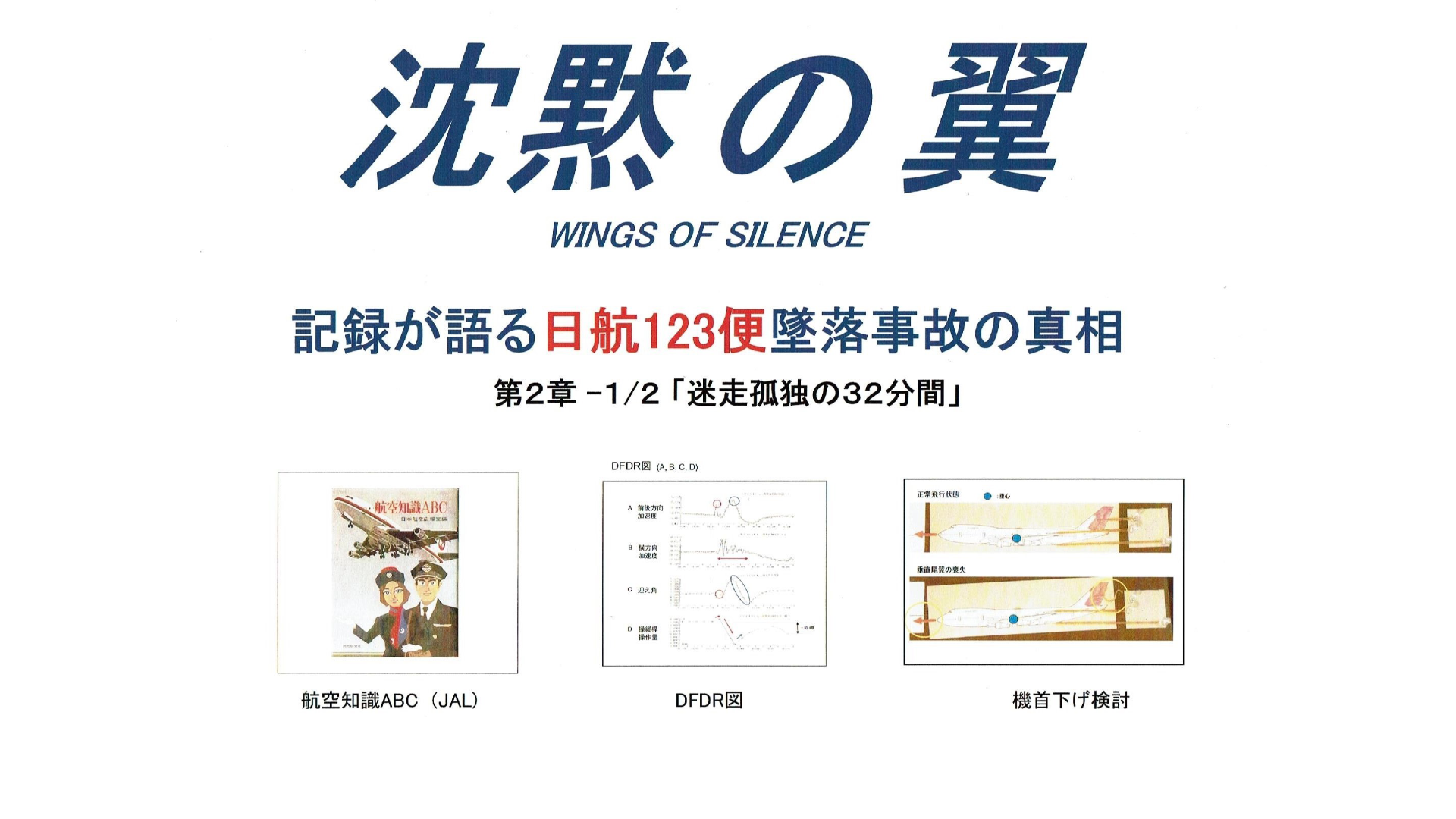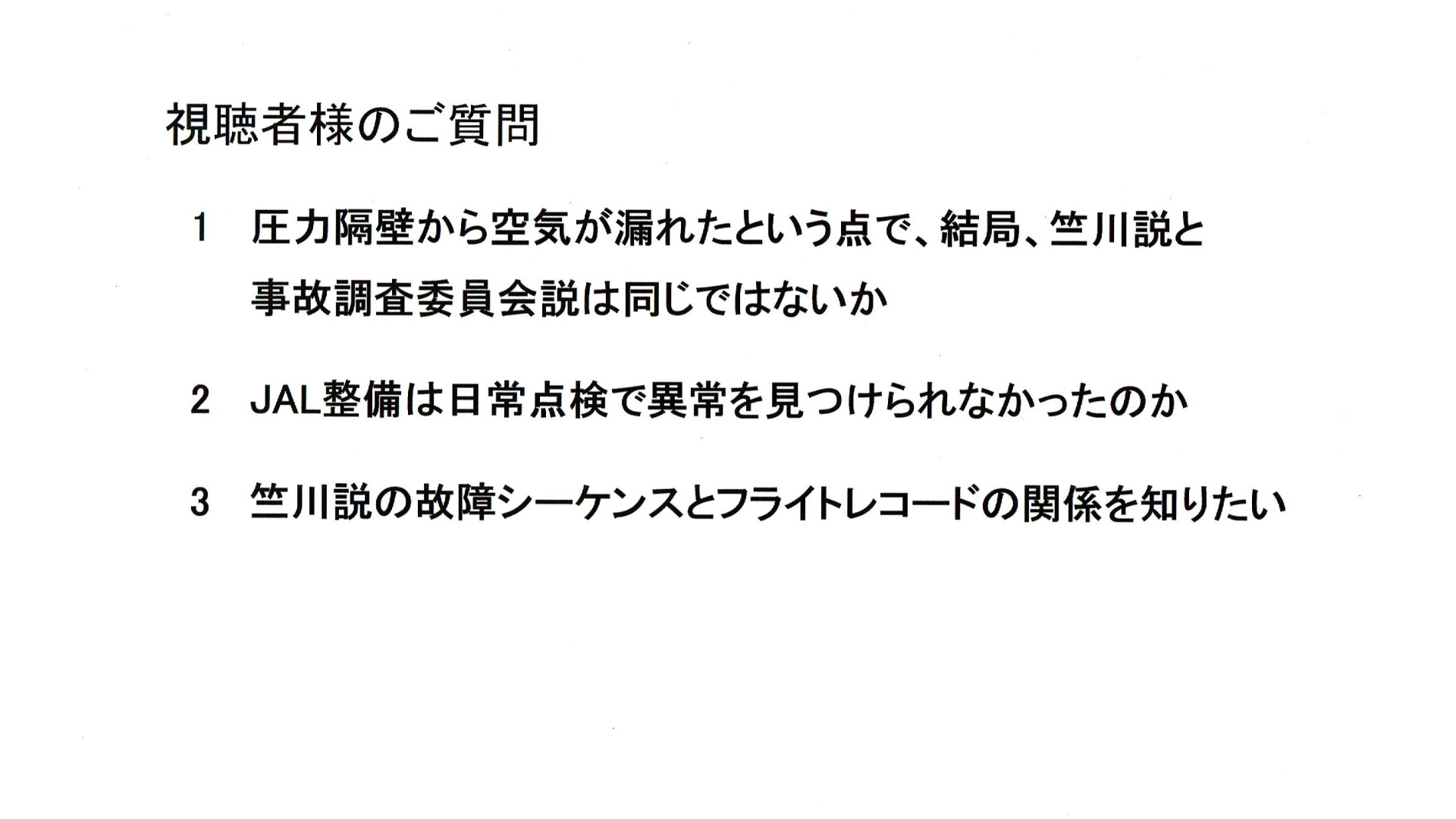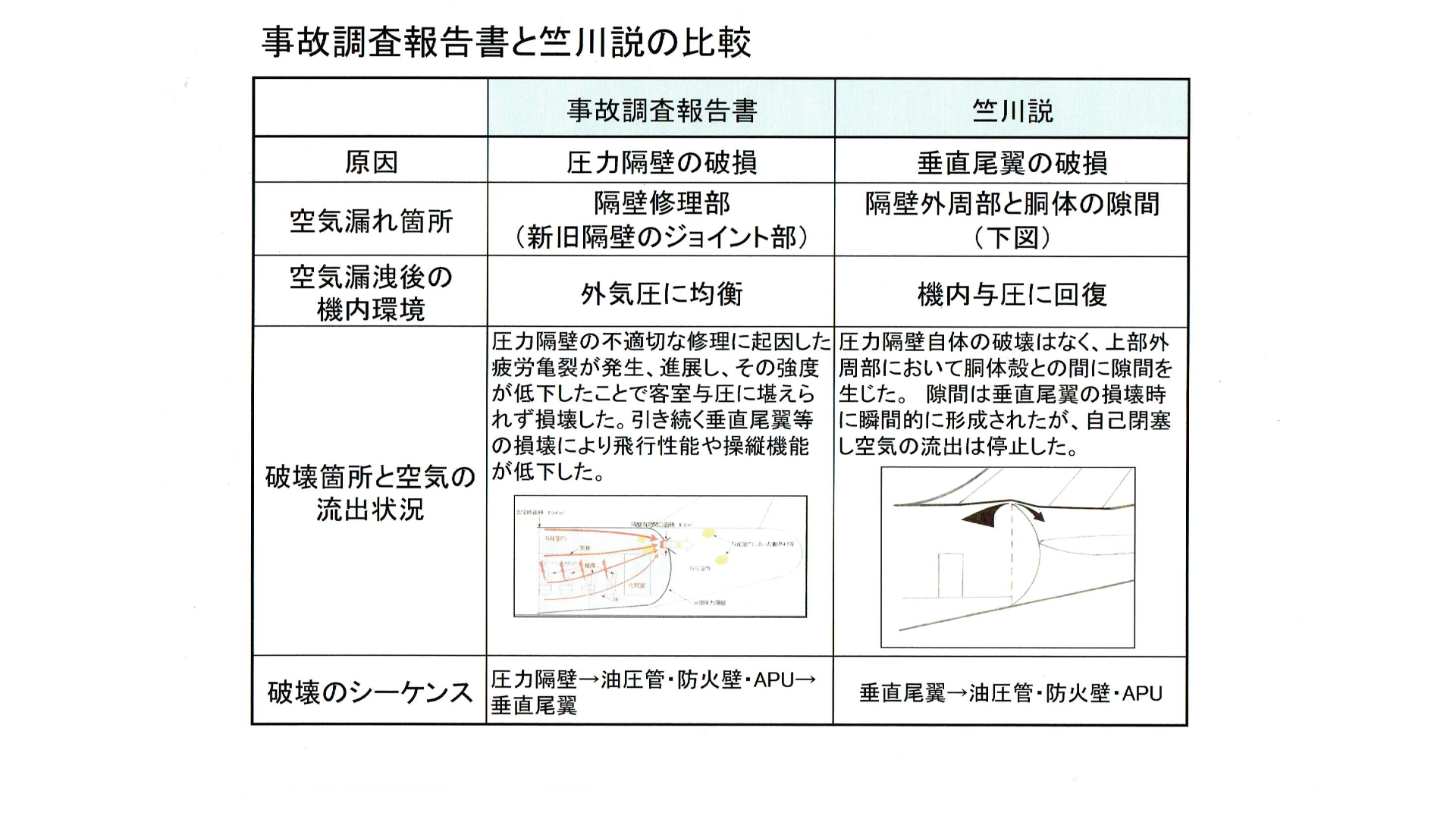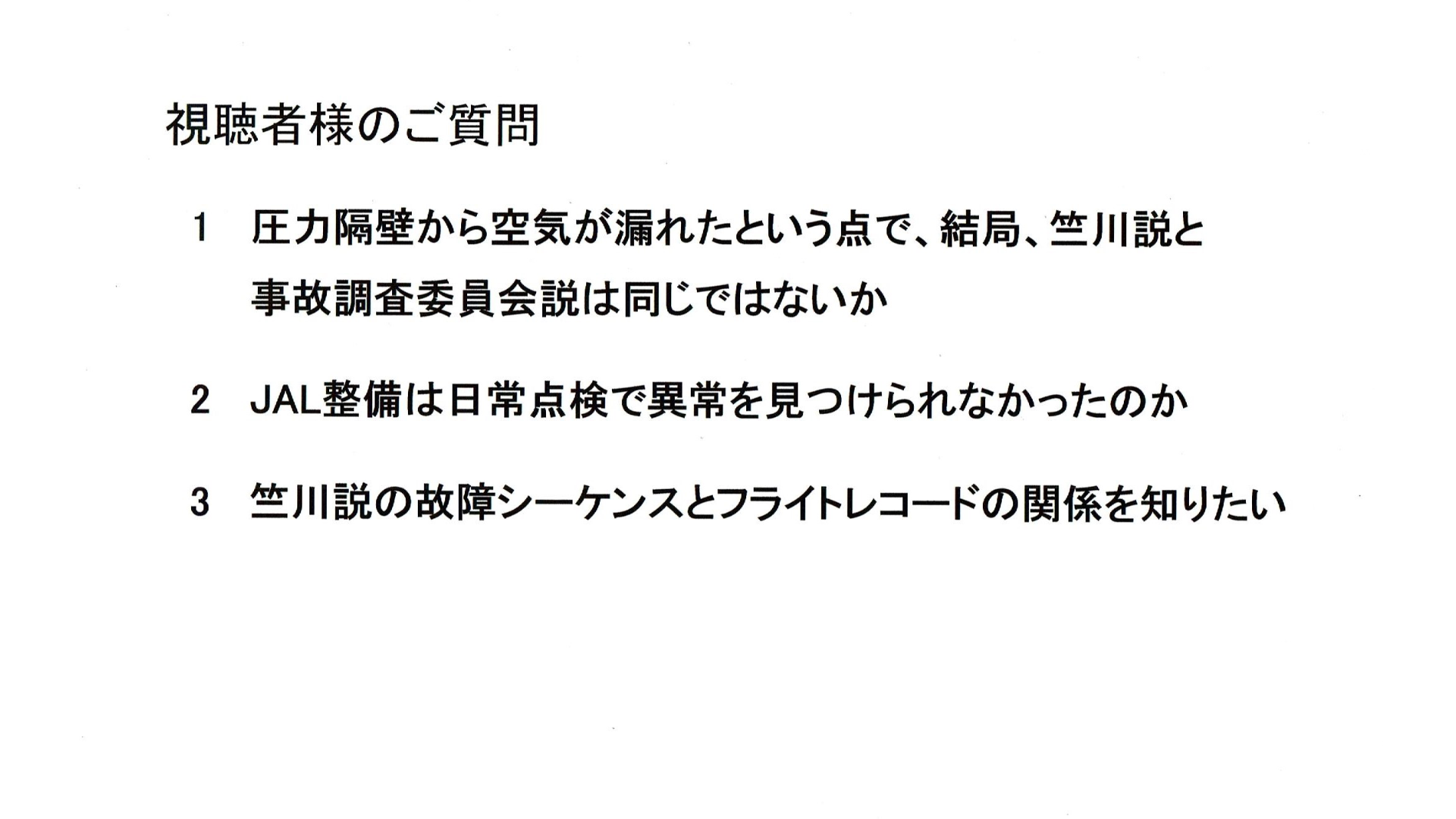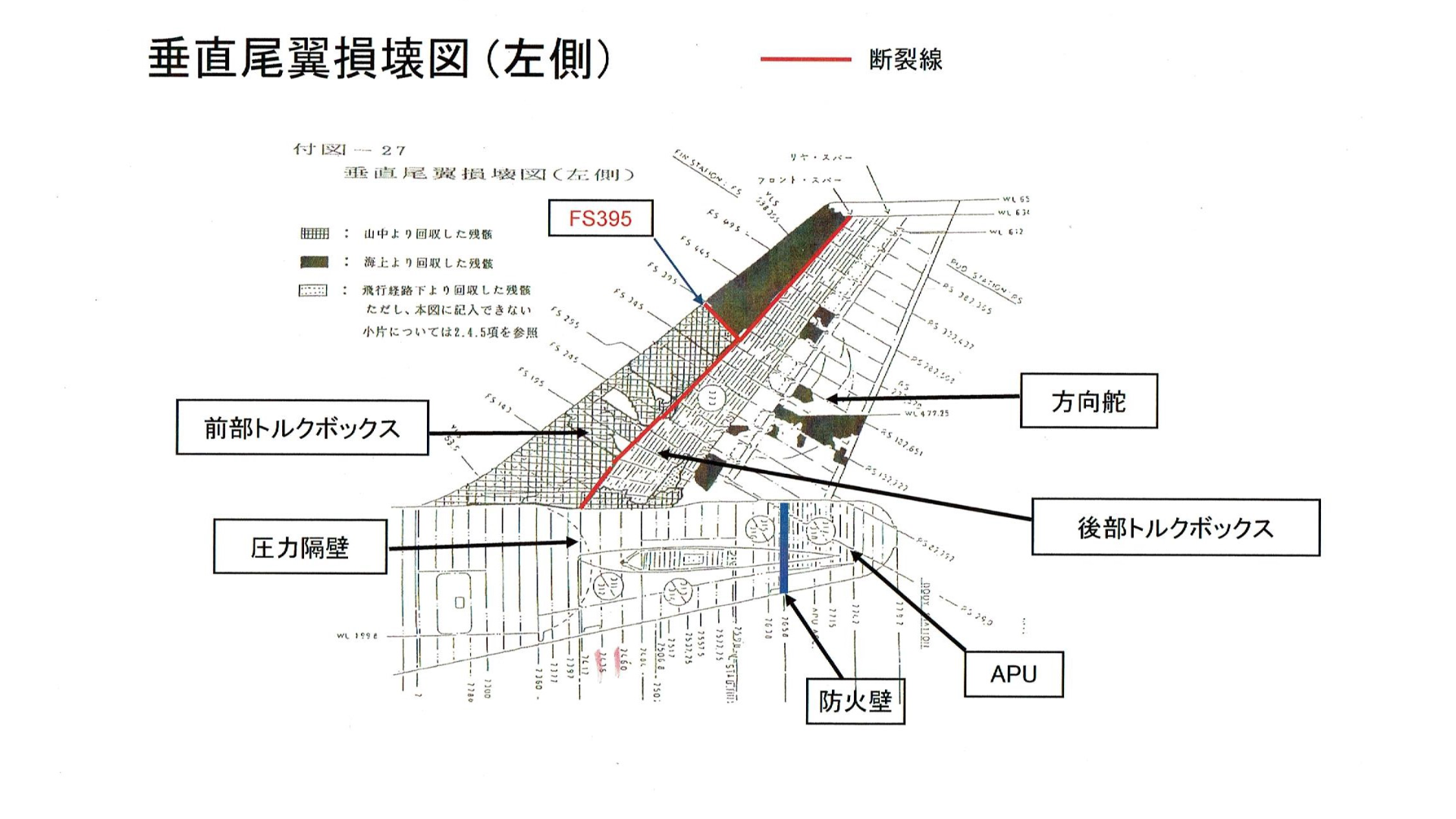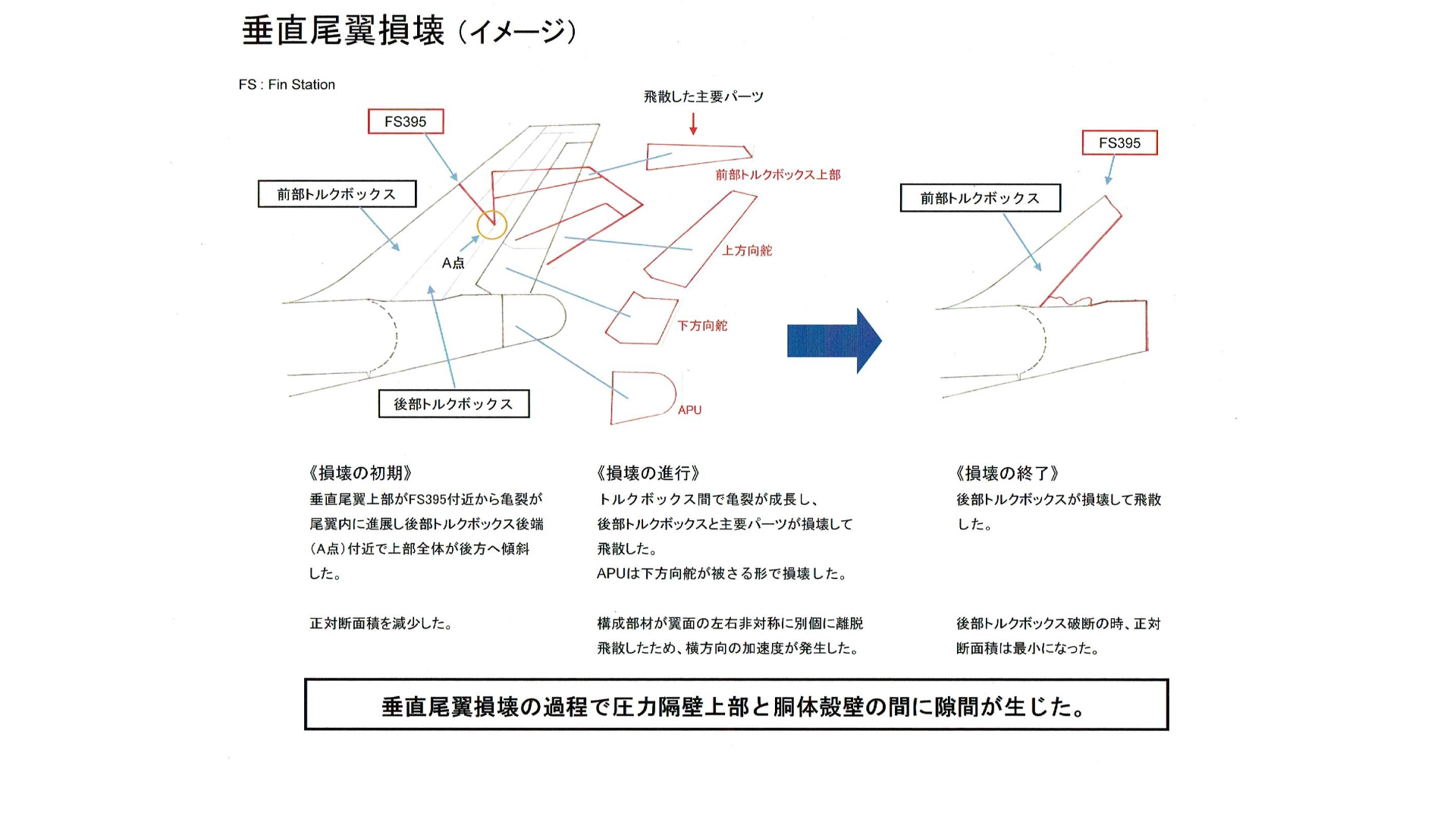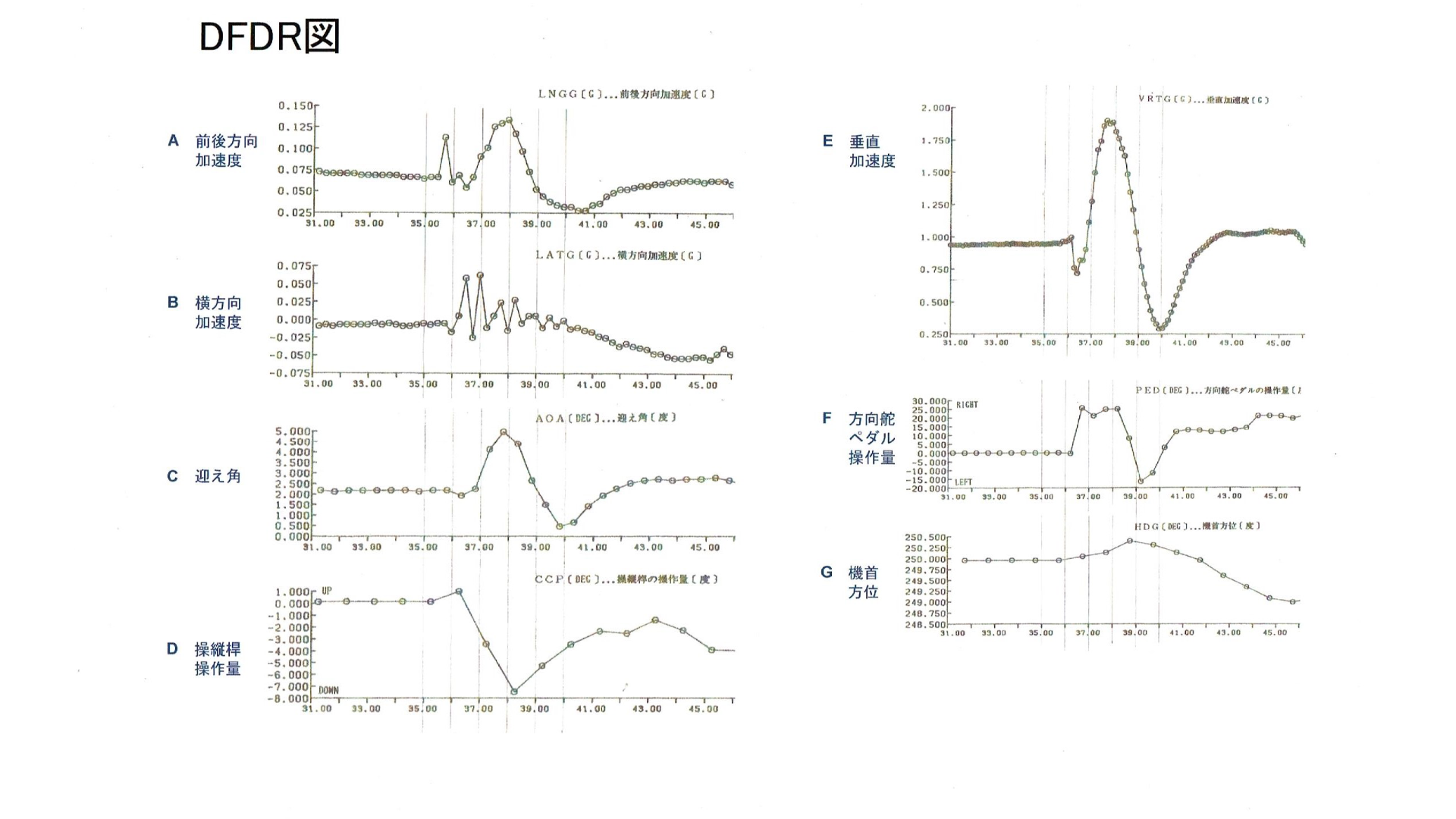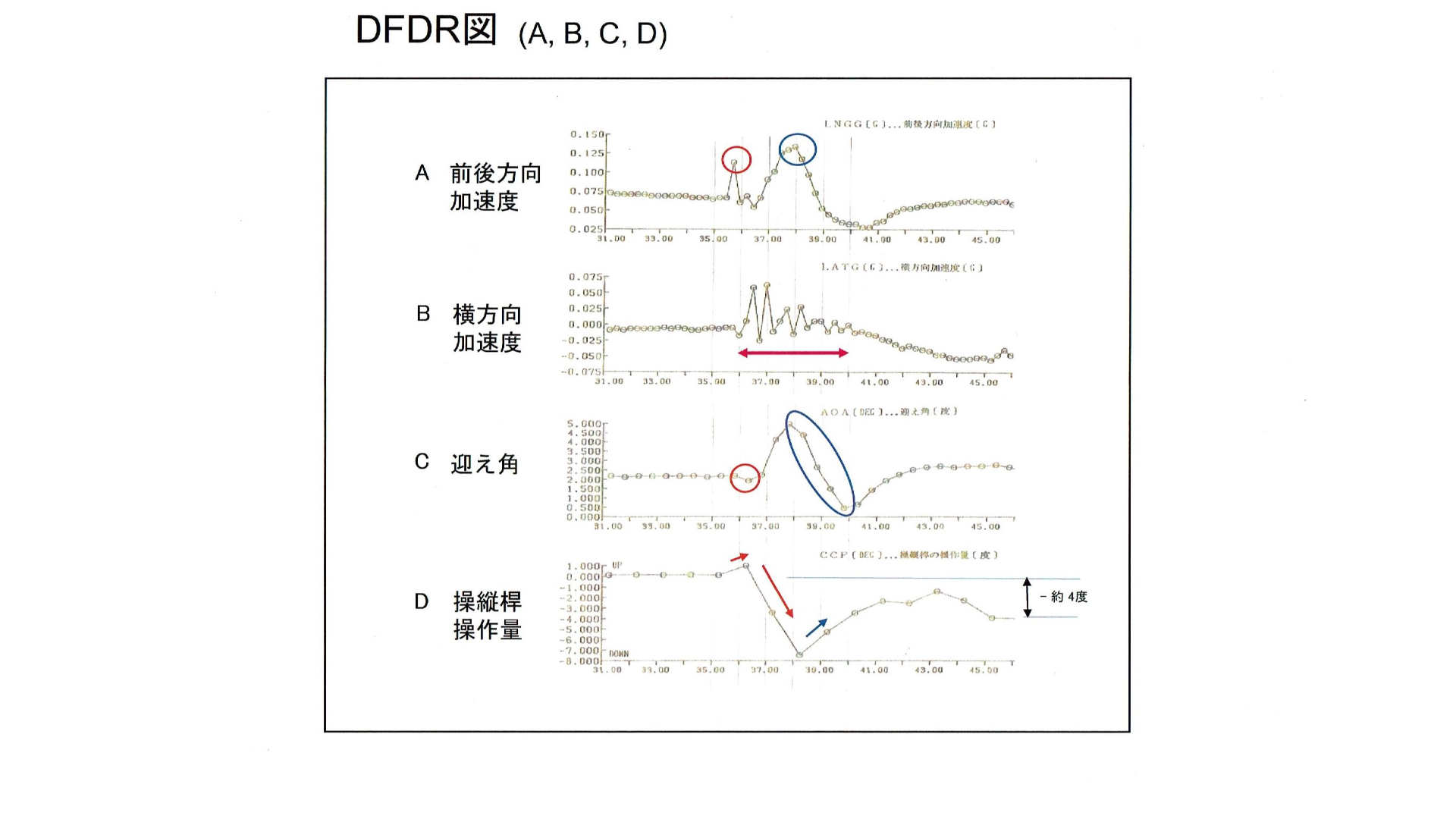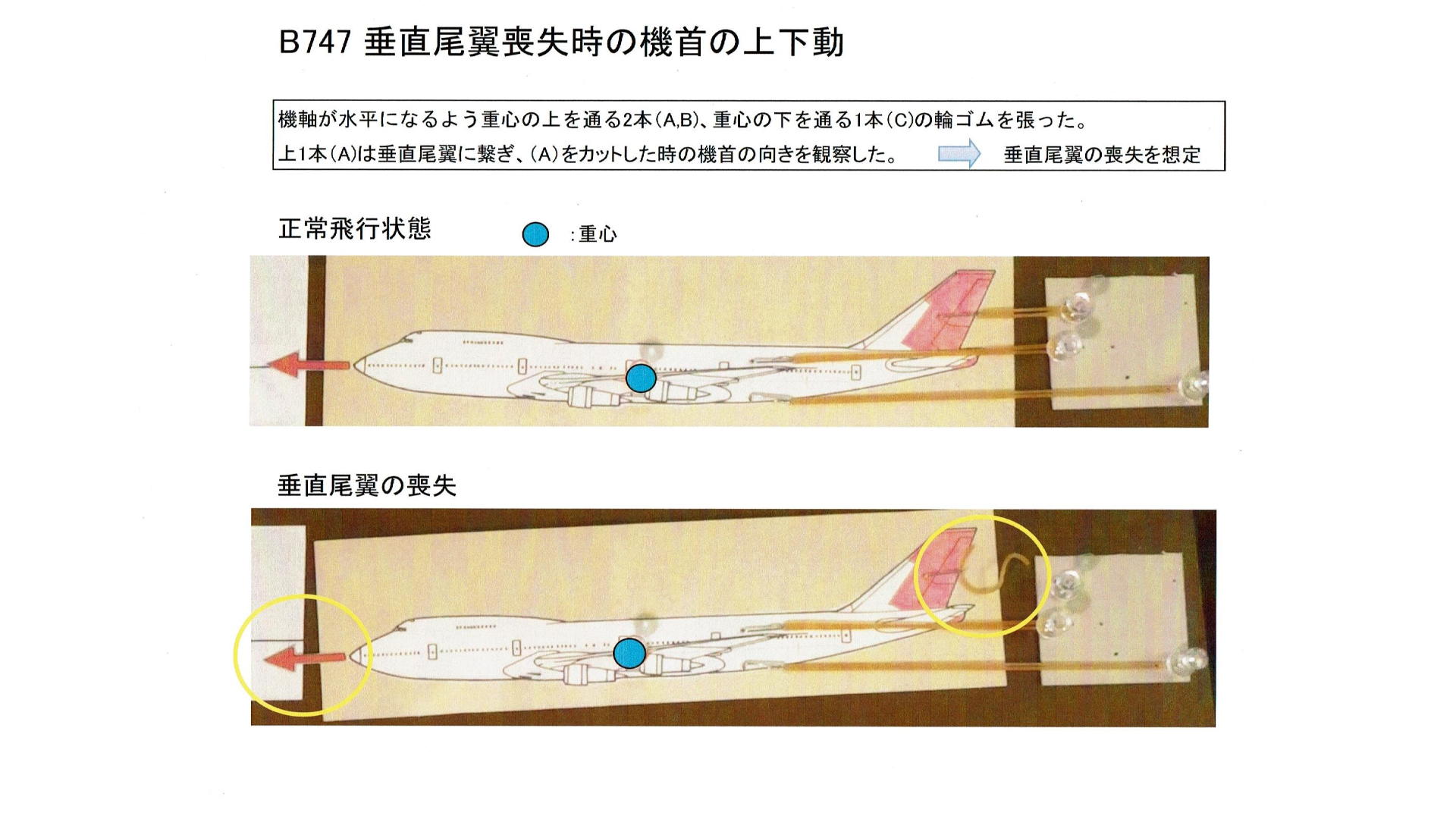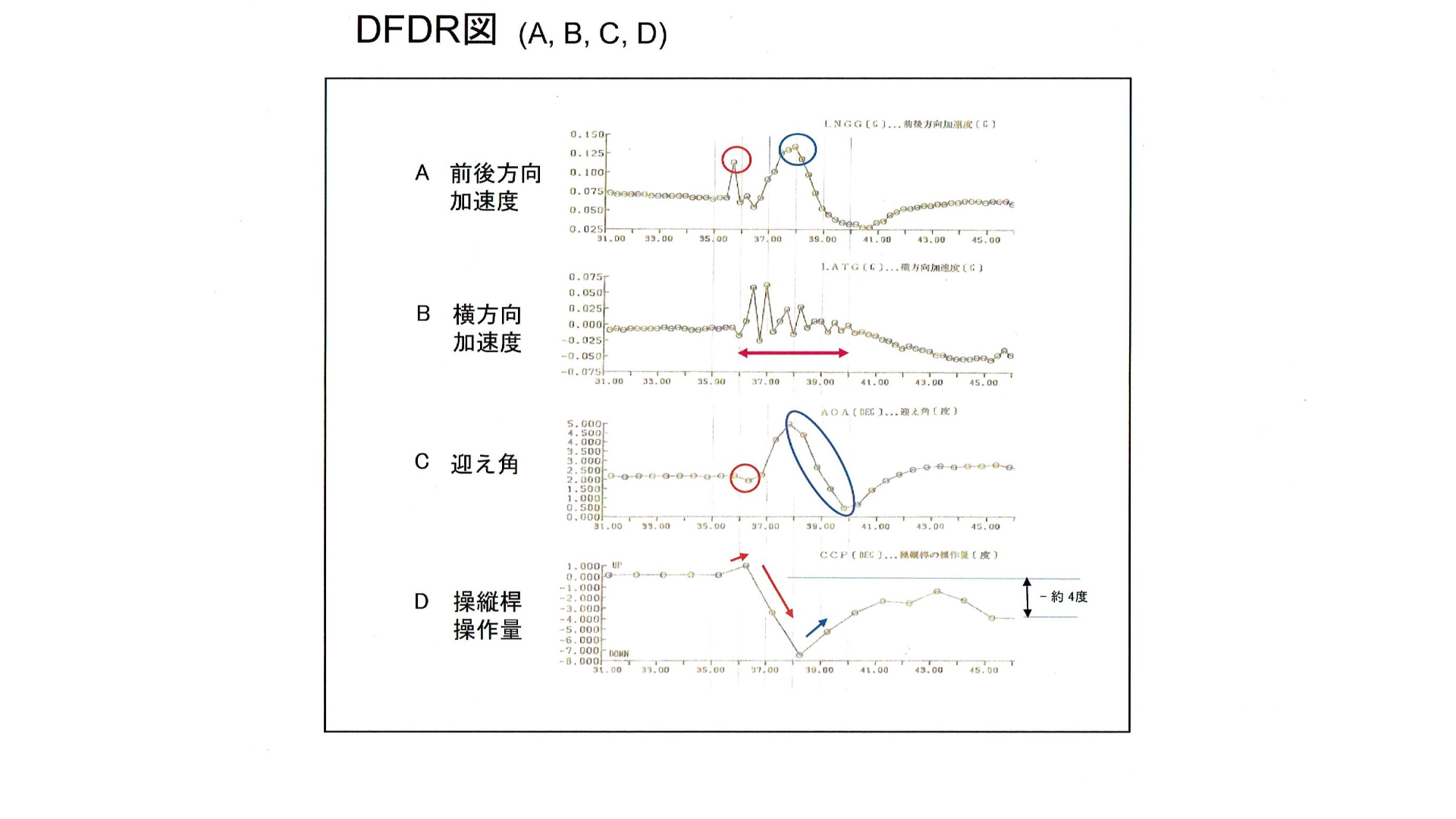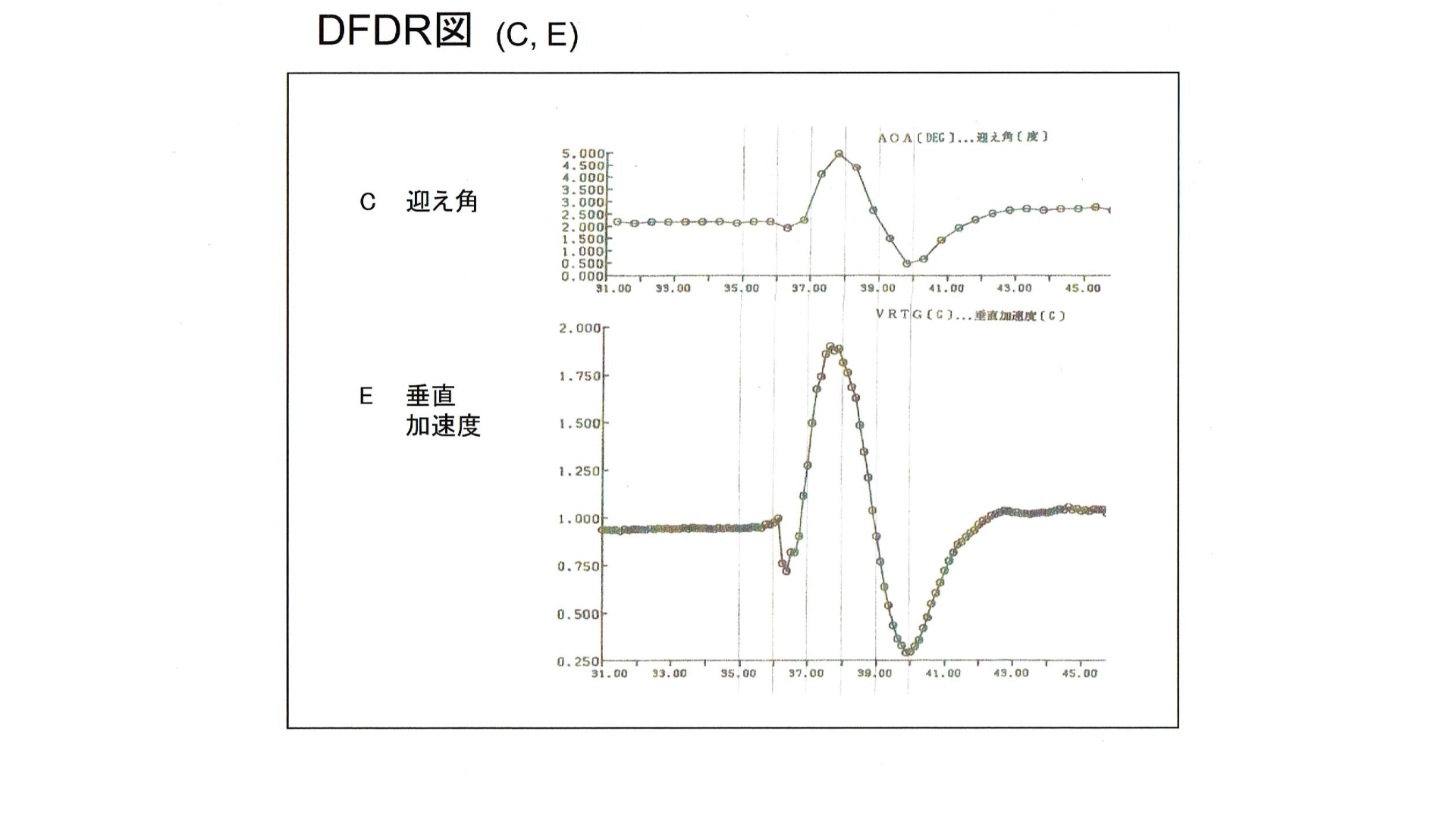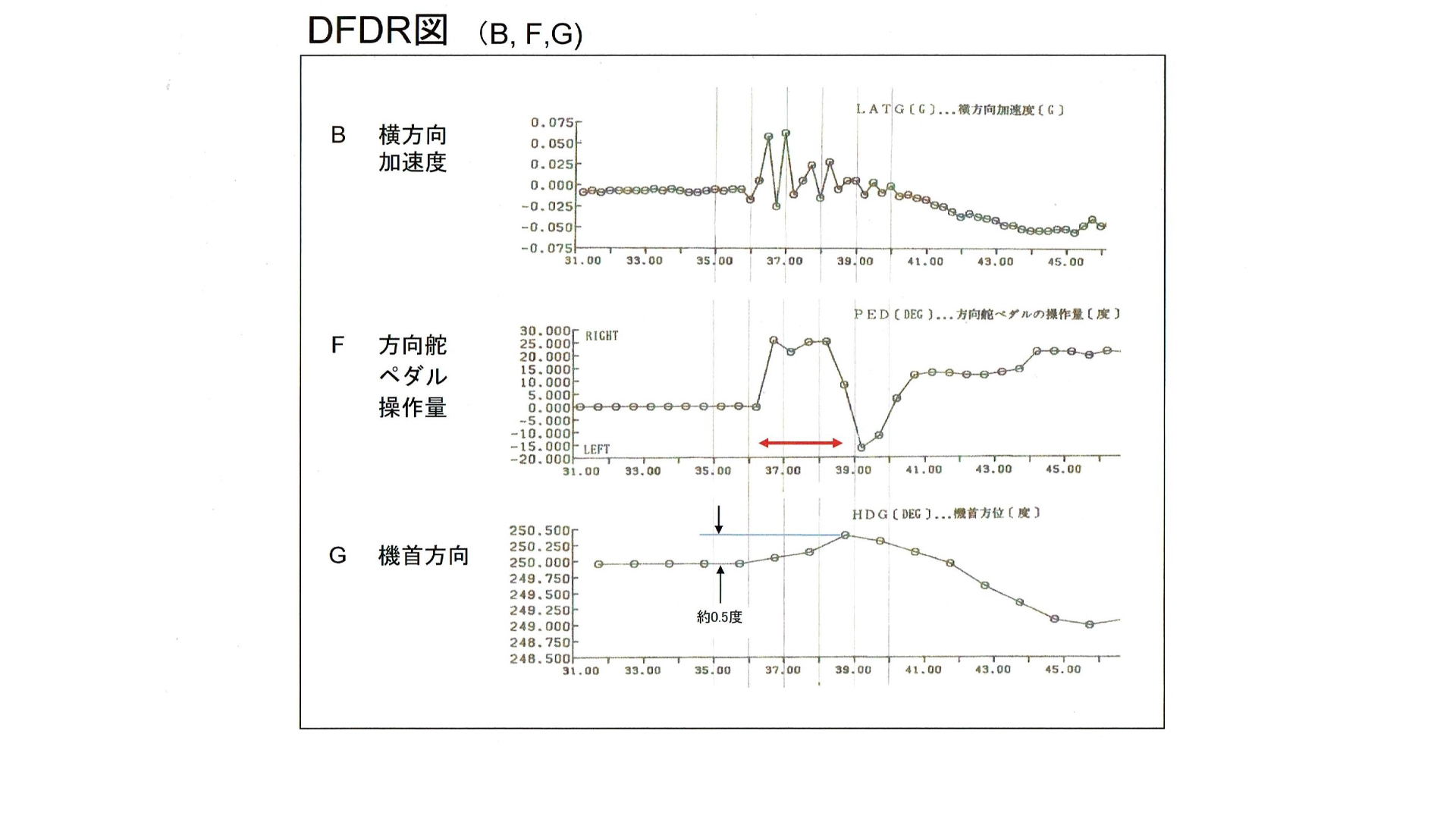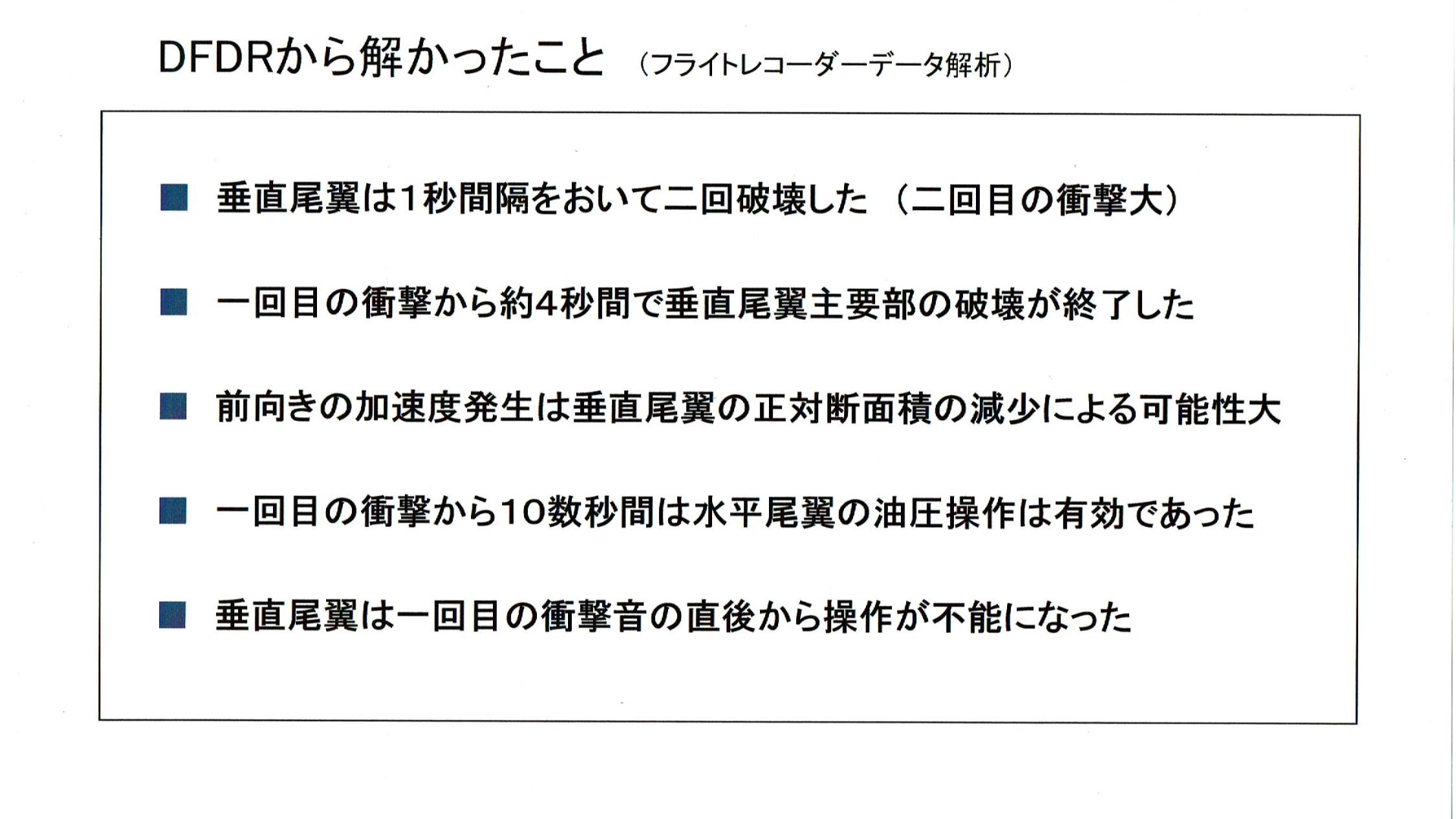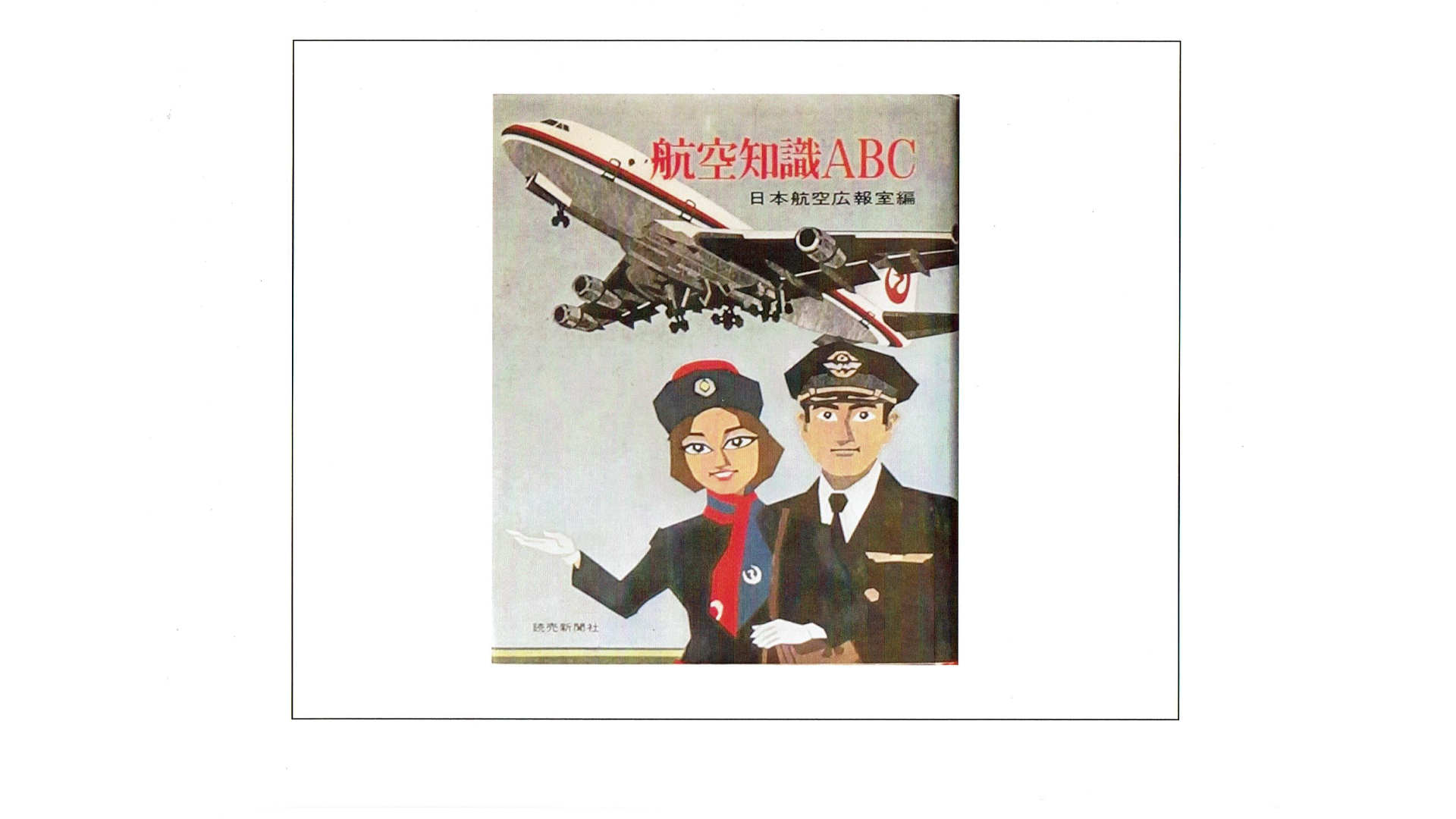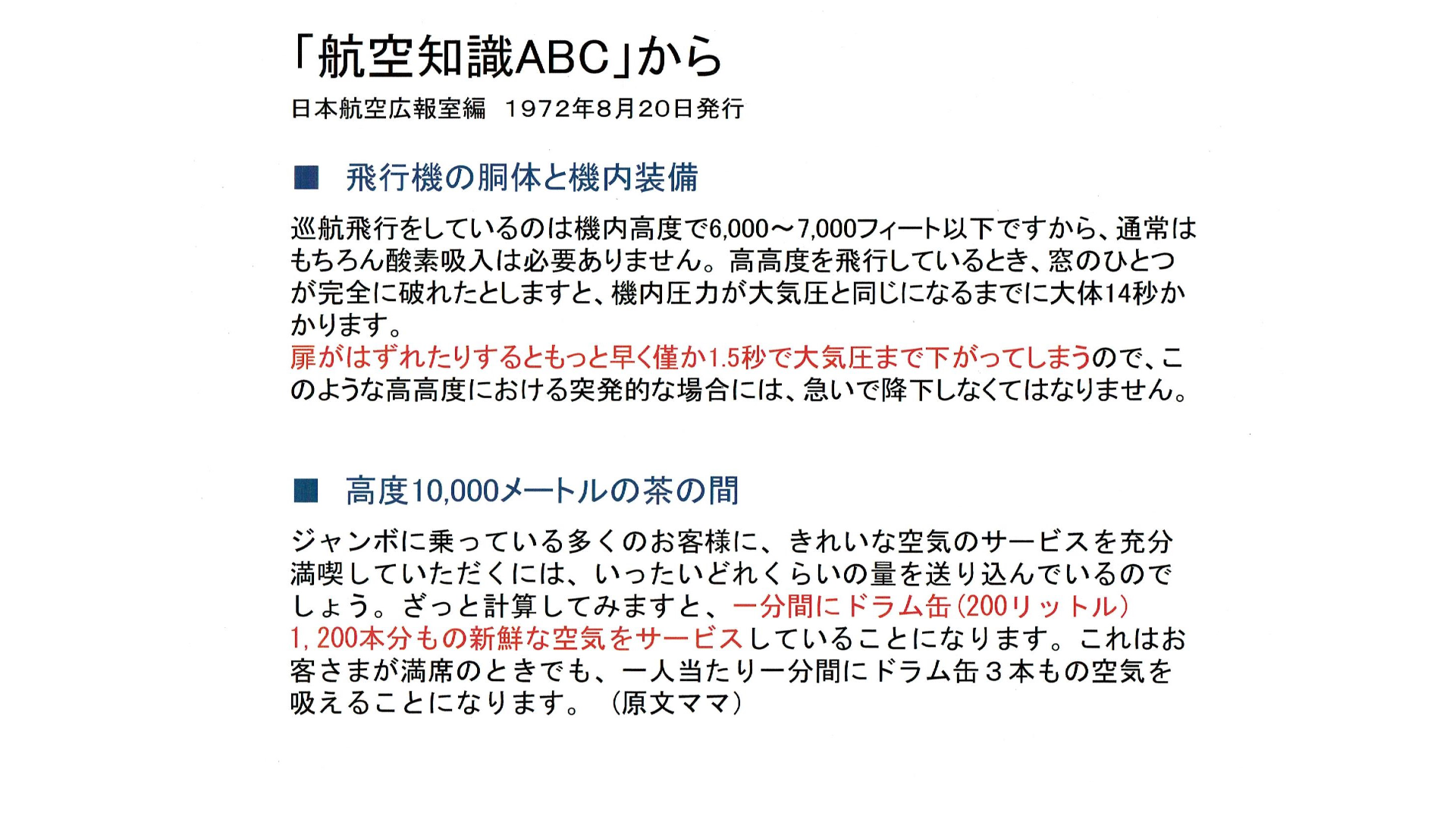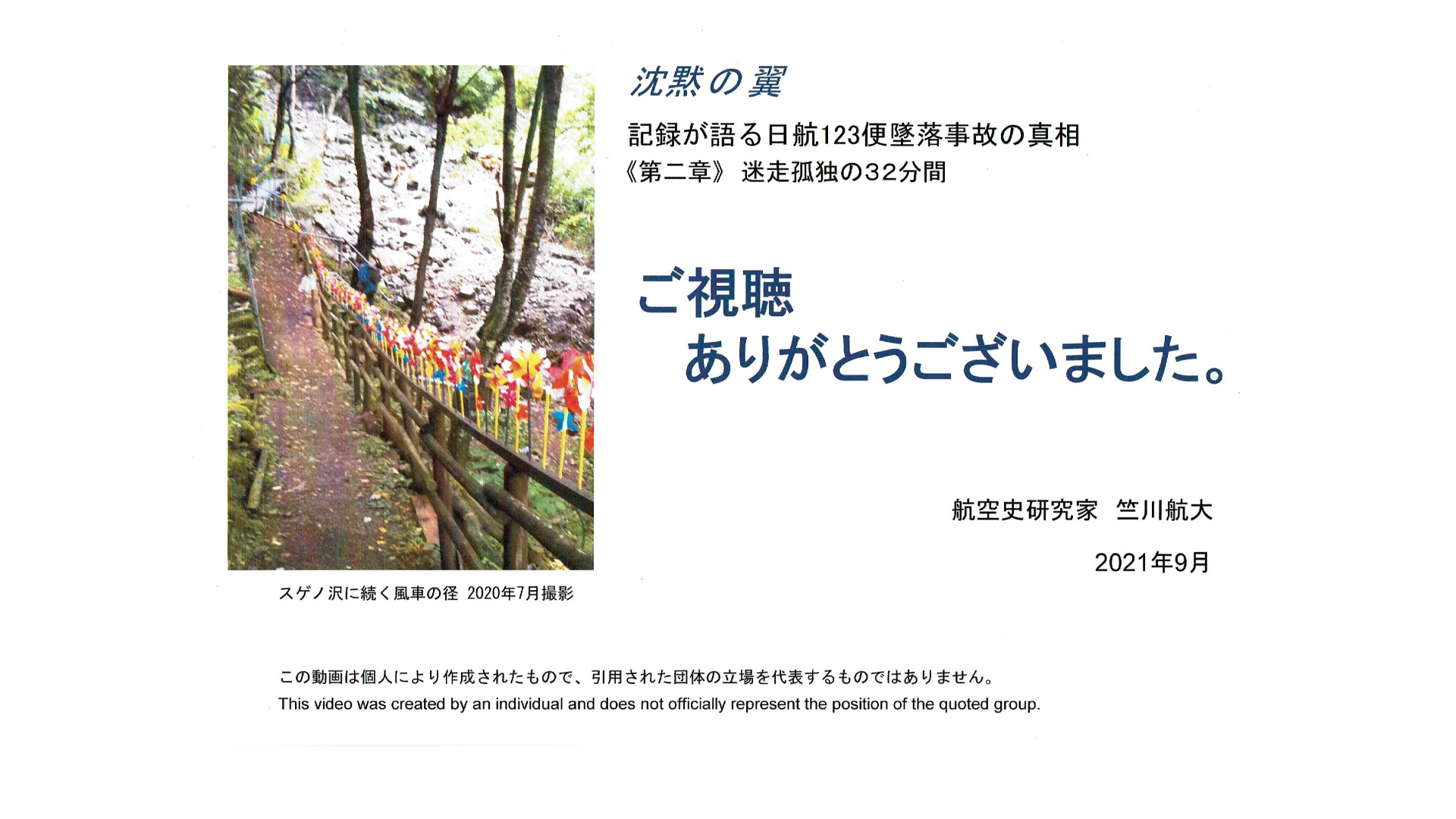Wings of Silence
Records tell the truth about the Japan Airlines Flight 123 crash
Chapter 2: 32 minutes of stray and loneliness - 1
The voice recorder was recording for 32 minutes.
If the stray flight was 30 seconds longer, the first impact sound would be overwritten and extinguished, making it more controversial as to what was the origin of the crash.
The reason I started analyzing this accident was that awarded a short story about the everyday life of hearing a song, and the singer who sang the song was the victim of the accident.
It's a strange coincidence that I felt like I was prompted by the singer, that two impact sounds were recorded on both ends of the voice recorder, and that the recording time was two minutes longer than I expected.
I am Takahiro Jikusen, an aviation history researcher.
I will report Chapter 2 "32 minutes of stray and loneliness" Part 1.
The second chapter covers 32 minutes, beginning with a bang and ending with a bang.
In Chapter 1, I reported my view on the cause of the accident. I have some questions, so I will answer them first.
This is the first question. Isn't my theory and the Accident Investigation Commission theory the same in that air leaked from the pressure bulkhead?
Basically, the two causes are different, and the resulting phenomena are also different.
My theory is that air leaks through the gap between the pressure bulkhead and the fuselage, and immediately after that the air leak stops on its own.
If the pressure bulkhead breaks, the expected indoor environment will soon faint. Or the person will die at worst.
If it is torn to the size of one tatami mat, the capacity of the air conditioner cannot maintain the in-flight environment after supplementing the leaking air.
The air conditioner of the B747 has the ability to replace the air inside in 6 minutes, but Japan Airlines published its own publication where the time for air to escape from the hole of the size of the door is only 1.5 seconds.
The process of air spills is the fundamental difference between the accident investigation report and my theory.
The short difference is whether a person can stay conscious for 32 minutes.
The second question is The question is whether the JAL maintenance person could find any abnormalities in the daily inspection. I couldn't find it by touch.
The reason is quite simple. This is because the maintenance regulations did not stipulate that it should be inspected. Compliance with the regulations is absolute, but they do not inspect for non-compliance.
I think the JAL maintenance team's ability and stance of observing regulations are at a level that the world can be proud of. For example, the first SR aircraft, JA8117, was transferred to NASA and remodeled. It is said that NASA sent a letter of appreciation for the perfect maintenance at that time.
There was a note of regret of JAL maintenance officials that if there was a description in the regulations, it could be inspected and prevented.
After the accident, the inspection level has been reviewed.
The third question is about the relationship between my theory and flight records.
Since it is also the main theme of the second chapter theme "32 minutes of stray loneliness", I will report the relationship.
According to my theory, the vertical stabilizer destruction sequence matches the flight record data. First, the situation of vertical stabilizer destruction is shown.
This is a vertical stabilizer damage diagram. Quoted from the accident investigation report.
The black part in the figure was recovered from Sagami Bay, and the lower part of the front torque box was recovered at the crash site, so the upper part of the vertical stabilizer was first separated over Sagami Bay.
The slim vertical stabilizer is photographed. From this situation, it seems that the rear torque box has also fallen into Sagami Bay.
I thought about the destruction sequence as shown in the figure from the data of the flight recorder.
Early stage of damage.
A crack developed from the upper part of the vertical stabilizer, and the entire upper part tilted backward near point A at the rear torque box. At this time, the facing cross-sectional area decreased.
A crack grew between boxes, damaging the rear torque boxes and scattering them. The APU was damaged when rudder was pushed from above. Lateral acceleration was generated because the components were asymmetrically separated and scattered separately.
The rear torque box was completely damaged and the face cross-sectional area was minimized.
The gap created above the pressure bulkhead was created during this process.
About two and a half hours ago, when JA8119 flew from Fukuoka to Haneda, the vertical stabilizer shook from side to side and made a strange noise, and passenger was worried about the eerie sound never experienced before. The signs were already appearing at this time.
The data of the flight recorder corresponding to the failure sequence are as follows.
There are 7 types of data quoted from the report. I will explain it individually.
The 7 types of data are as follows. Front-rear acceleration, lateral acceleration, angle of attack, control stick nose up / down operation amount, vertical acceleration, rudder pedal operation amount, nose direction. I will explain in detail individually.
There are two peaks in the anteroposterior acceleration of A. The first peak is immediately after the first impact sound, and it is reasonable to think that the phenomenon of acceleration in the direction of travel is due to the decrease in the facing cross-sectional area due to the damage of the vertical stabilizer acting on the decrease in air resistance.
The second peak is due to a larger reduction in air resistance. At this time, about 70% of the vertical stabilizer was lost.
The report makes the data of this first peak itself an error. Alternatively, there was a view that it was caused by a jet of air in the cabin that broke through the pressure bulkhead and blew backward.
However, I think we should not break the attitude that individual data is meaningful even if it is trivial. I disagree with the investigative committee's stance of dismissing the very first sign of anomalous data as a recording device error.
The first point I focused on was the angle of attack indicated by the red circle on the C angle of attack graph.
The very small nose-down sign that appeared immediately after the first impact sound has important implications. I felt that lowering the nose was the result of forward movement of the center of gravity and reduced air resistance above the center of gravity.
I did a simple experiment on this subject.
I prepared a B747 pattern and fixed the position of the center of gravity with a pin. I pulled the top and bottom of the center of gravity backward with a rubber band. Above are two rubber bands, one connected to the vertical stabilizer.
When I cut the upper rubber band assuming that the vertical stabilizer suddenly scattered, the nose of the pattern was lowered as shown in the photo below.
This experiment visualizes the initial basic operation.
Graph B shows that the lateral acceleration occurred after the first peak. It oscillates for about 2.5 seconds to the second peak and lasts for about 4 seconds.
This vibration seems to represent the process in which the vertical stabilizer is torn apart one after another and the fragments are scattered.
The time lag of the destruction of the left and right surfaces appears in the acceleration.
At this time, the wind speed is about 155 meters per second and the wind pressure is about 490 kg per square meter even at 0.4 atm, so we can imagine the situation where the roof and roof tiles are blown and destroyed by the typhoon.
The report states that the reason for this lateral acceleration could not be estimated, but I presumed that it was the vibration caused by the peeling of the components.
There is a gap of about 1 second between the start points of the first and second peaks. The two sounds indicate that there were two origins of great destruction.
At the second peak, the vertical stabilizer reached the maximum fracture phenomenon and the cross-sectional area of the vertical stabilizer was minimized.
Since the angle of attack of the aircraft dropped for a moment in the graph of C, the pilot reacts reflexively by operating the control stick of D and operates the control stick in the upward direction.
Due to the relationship between the decrease in air resistance at the top of the aircraft and normal thrust, the angle of attack increased and the nose turned upward, so the pilot immediately pushed the control stick to lower the nose.
After the second peak, the angle of attack surrounded by blue is also lowered as in the first. It can be said that the fluctuation of the angle of attack of the aircraft is the same reason for both.
In the graph of D, the control stick after the impact has once subsided has moved to a range of about -4 degrees from the position before the accident, and it is dealing with the tendency to raise the nose.
The graph of E is the data of vertical acceleration, but it clearly shows the process of descending → ascending → descending of the aircraft for about 4 seconds.
The lateral acceleration indicated by B swings to one side, and the pilot steps on the right pedal to try to correct it, but as shown in the G graph, the aircraft does not respond to changes in the nose direction at all.
There is no response to pedal operation because the vertical stabilizer has already been lost.
All of these are possible movements of the aircraft after the vertical stabilizer is damaged, but these graphs reveal some important things.
(1) The main part of the vertical stabilizer was destroyed twice with an interval of 1 second. The second impact is big
(2) Destruction of the main part of the vertical stabilizer was completed in about 4 seconds from the first impact.
(3) The hydraulic operation of the horizontal stabilizer was effective for 10 seconds after the first impact. Flood control was alive during this time.
(4) It is estimated that the two forward accelerations are due to a two-step decrease in the facing cross-sectional area of the vertical stabilizer.
(5) The vertical stabilizer could not be steered immediately after the first impact sound was generated.
It shows that it was the vertical stabilizer that first lost its function. When I read the flight record to the end, I was able to confirm that JA8119 was unable to fly independently and actively.
In this situation, it is impossible to land independently, and if it can be done, the worst situation of a crash will be avoided and it will be possible to return to Haneda.
I think it was impossible to make an accurate landing because there was no way to follow the instructions even if the escort aircraft was on the side.
I would like to mention the decompression in the room.
The "Aviation Knowledge ABC" issued by the Japan Aviation Public Relations Office in August 1972 describes the B747 as follows.
"When flying at high altitudes, if the door comes off, it will drop to atmospheric pressure in just 1.5 seconds, so you have to hurry down."
By the way, the door of B74 7is about 2 square meters, which is almost the same area as one of the models that the accident investigation committee examined for air leakage.
Furthermore, "Aviation Knowledge ABC" describes as follows. "The ventilation is the ability to replace the air inside the aircraft in about 6 minutes on the ground.
The air in the cabin drops to 0.4 atm, which is the same as the outside air, in 1.5 seconds. Of course, this environment, which is more than twice as high as Mt. Fuji, is not an environment where ordinary people without training can keep their consciousness.
At high altitude, the air conditioner has the ability to ventilate the entire cabin over a few minutes. It is clear that the air conditioner cannot compensate for the air that escapes to atmospheric pressure in 1.5 seconds.
Survivors testify that they were able to breathe normally without feeling a sudden decompression or low temperature. Did a big hole open in the pressure bulkhead of JA8119?
This time, while answering some questions, I considered my theory together with the flight recorder record.
Next time, Chapter 2, Part 2, I will consider the accuracy of sighting information, identification of the crash site, why it took 16 hours to start rescue, and so on.
Thank you for watching today.
This was reported by Takahiro Jikusen, an aviation history researcher.
See you next time in Part2.

